Jews all over the world are celebrating the holiday of Chanukah this week. Chanukah, or The Festival of Lights, is a very minor holiday with little religious significance. It's history is thus: Almost two hundred years before the birth of Christ, a battle was fought between the Greeks and the Jews which lasted for three years. Under the leadership of Judah Maccabee and his brothers, the battle finally ended when the Jews drove out the Greeks and then began the rededication of the second Jewish temple in Jerusalem. Olive oil, which was needed to burn the temple's eternal flame, was scare. There was only enough oil to last one night, but miraculously God enabled the oil to burn for 8 days - the time it took to process new olive oil. Today, Jews celebrate this miracle by burning candles for eight days during the holiday of Chanukah.
Alongside the spread of the commercialism of Christmas, Chanukah has also become a widely commercialized holiday. Both holidays correspond to the winter solstice, so Chanukah has become known as the Jewish Christmas. The most visible symbol of the holiday is the menorah, or the candelabra with its eight candle holders plus one which is used to light each individual candle. Most Jewish families have several menorahs, a new one given perhaps as a wedding gift, and an old one that has been passed down for a generation or two or three.
These old menorahs are widely valued in the antique field known as Judaica, or, the collecting of Jewish ceremonial and secular items. This field has grown enormously in the past decade and major auction houses such as Christie's and Sotheby's have their own Judaica division. Perhaps it is the hunger for a more spiritual life that has fueled the collecting of Judaica or maybe it is result of the Holocaust that has caused a feeling of pride of religion. Regardless of it's reasons, Judaica is a hot collector's item - not quite reaching Major Trend Alert status, but prices of antique Judaica are going through the roof.
There are three components of Judaica: manuscripts and books written in Hebrew, fine art, and ritual objects (of which the menorah would fall under). Items can be either secular or religious. Since Jew migrated from the Holy Land up through Spain, into Eastern Europe through Germany and finally Russia - before they began their westward flight to the Americas, Northern and Southern, Judaica comes from many different countries, with each country's unique influence upon a single object. Religious objects are universally either silver, pewter, or brass. Gold is rarely, if ever seen. Fakes abound. Ebay is filled with gold "antique" Judaica - if it's gold, it's fake. So, while Jews worldwide are celebrating Chanukah this week, take a look at some examples of the finest Judaica on the market from Sotheby's and Christie's. Shalom!
A silver, Polish Chanukah menorah, from the late 19th century.
A box, in the form of Rachel's tomb. Jerusalem, 1915. Estimated at auction to go for up to $40,000.
A Chanukah Menorah: German, rare, silver tree-form, late 18th century.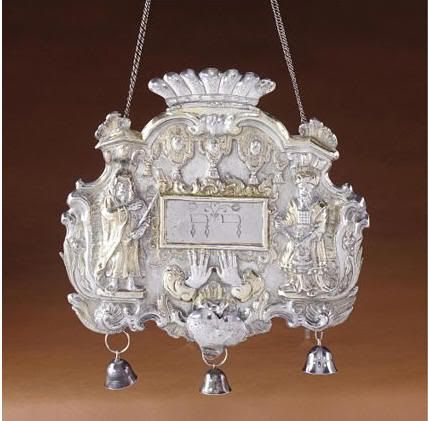
One of the most beautiful pieces of Judaica: a breastplate that fits over a torah's cover. After reading the Torah, one literally "dresses" it before it is placed back in the Ark. From Germany, 1830s.
In addition to the breast plate, a torah is dressed with silver finials placed over it's scrolled handles. Here, silver finials from the Netherlands, 1768, estimated to go at auction for up to $90,000.
A silver filigreed book binding used to cover a prayer book.
A silver Polish Chanukah menorah, very ornate, from the 1860's, estimated to go at auction for up to $180,000!!
A prayer book used in a ritual circumcision, leather with gold tooling, Italian, 1750.
From Germany, 1700's, a set of tools used by the moyel during a circumcision. Ouch!!!!!
A pointer, used to read the tiny, handwritten Hebrew of the Torah. Usually, a pointer is gifted to the Bar Mitzvot. These pointers are passed down generation to generation to be used in the Bar Mitzvah ceremony.
A Kiddush cup, or wine glass. A staple of the Friday night Shabbat service in every Jewish home.
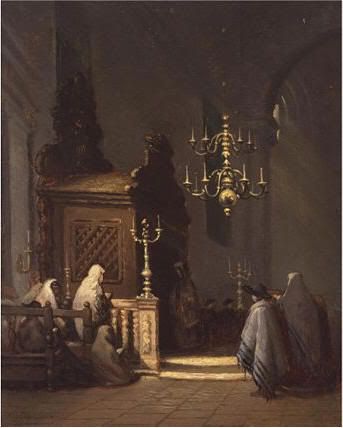
The interior of a synagogue, painted by Johannes Basboom during the 19th century. Note the brass candelabras and chandelier. The large box to the left, is the holy Ark that houses the synagogue's torahs. Also note the women are separated on the left from the men on the right, a practice that is still adhered to today in orthodox temples.
Rare Derby porcelain figures of a Jewish peddlar and his wife, 1760s.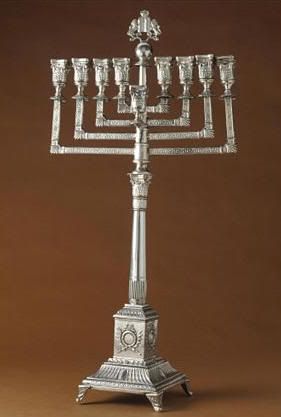
A neoclassical Polish menorah from the early 1900s.
An ornate mezzuzah. Commanded by God to be used to identify a Jewish presence in the house, Jewish people today continue to place these pieces at their front door. Inside each and every mezzuzah is a copy of important passages from the Torah, in miniature. Recently a new Jewish neighbor stopped by to meet me - she had walked up and down our street looking for the familiar Mezzuzah!
An antique Passover plate. Used during a Passover service, or Sedar, the ceremonial foods are placed on a plate like this.
A very elaborate spice cellar used to mark the end of the Shabbat on Saturday night. This ceremony, called the Havdalah, celebrates the reentry into the work week. A special braided candle is lit and the sweet spices inside are smelled to remember the sweetness of the Shabbat.
A tzedakah box, or a charity box. Typically the mother will place coins in this box for charity. In olden days, a man would come around all the houses and collect this money for the poor.
A pair of silver candelsticks, one of the more recognizable pieces of Judaica. At the beginning of each Shabbat, the mother will light two candles and say silent prayers before an elaborate traditional Friday night supper.
To see antique Judaica pieces like these in person, most large synagogues have museums which house these beautiful symbols of religious ceremony. Here's wishing all my readers either a Happy Chanukah or a Merry Christmas!!



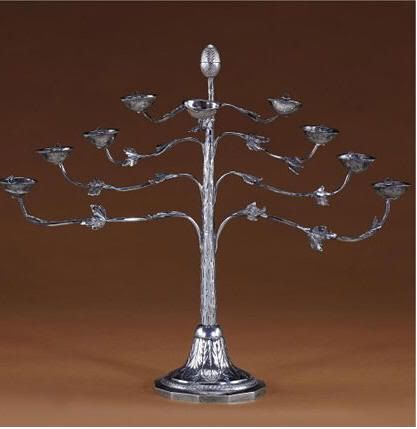

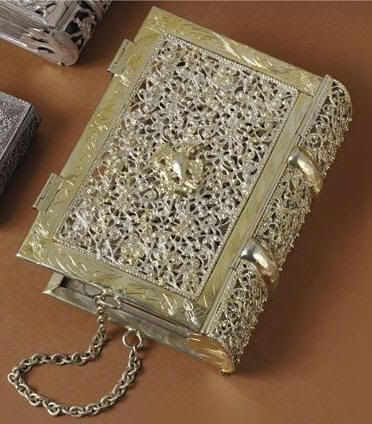
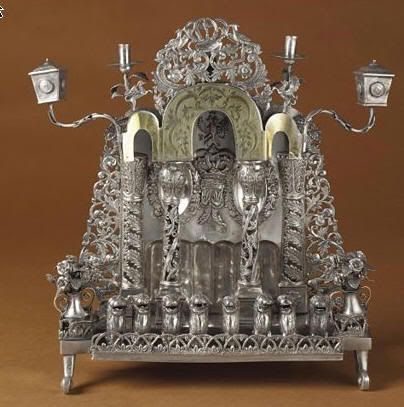
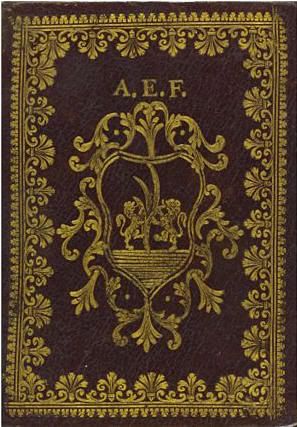
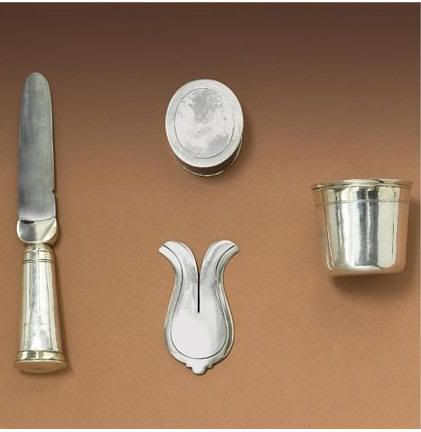
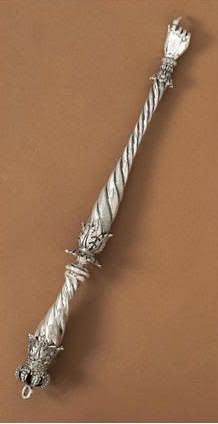
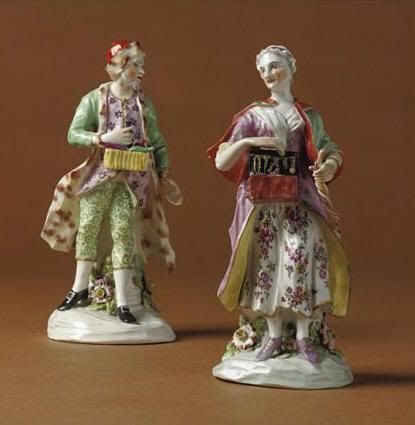
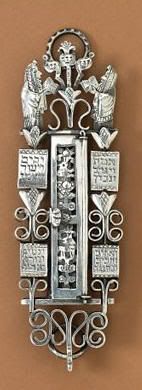
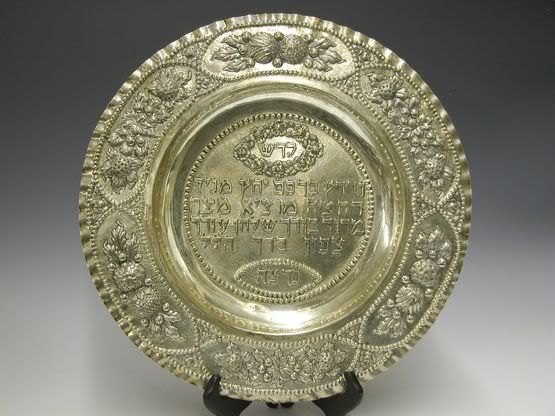
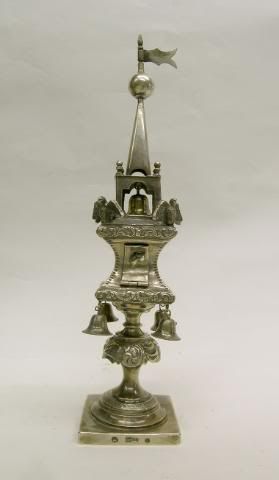
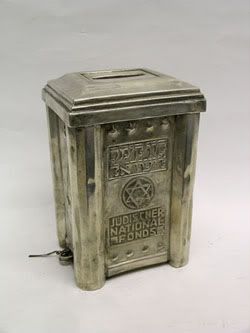
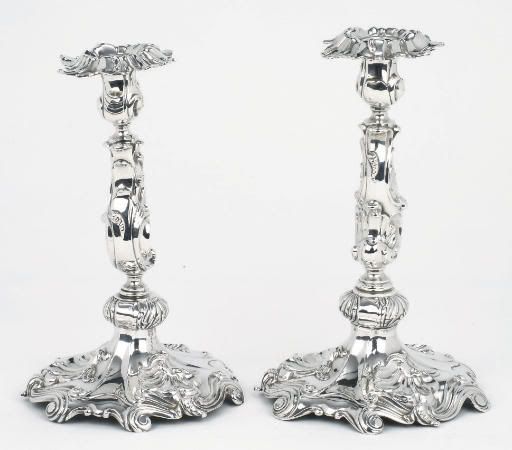
No comments:
Post a Comment